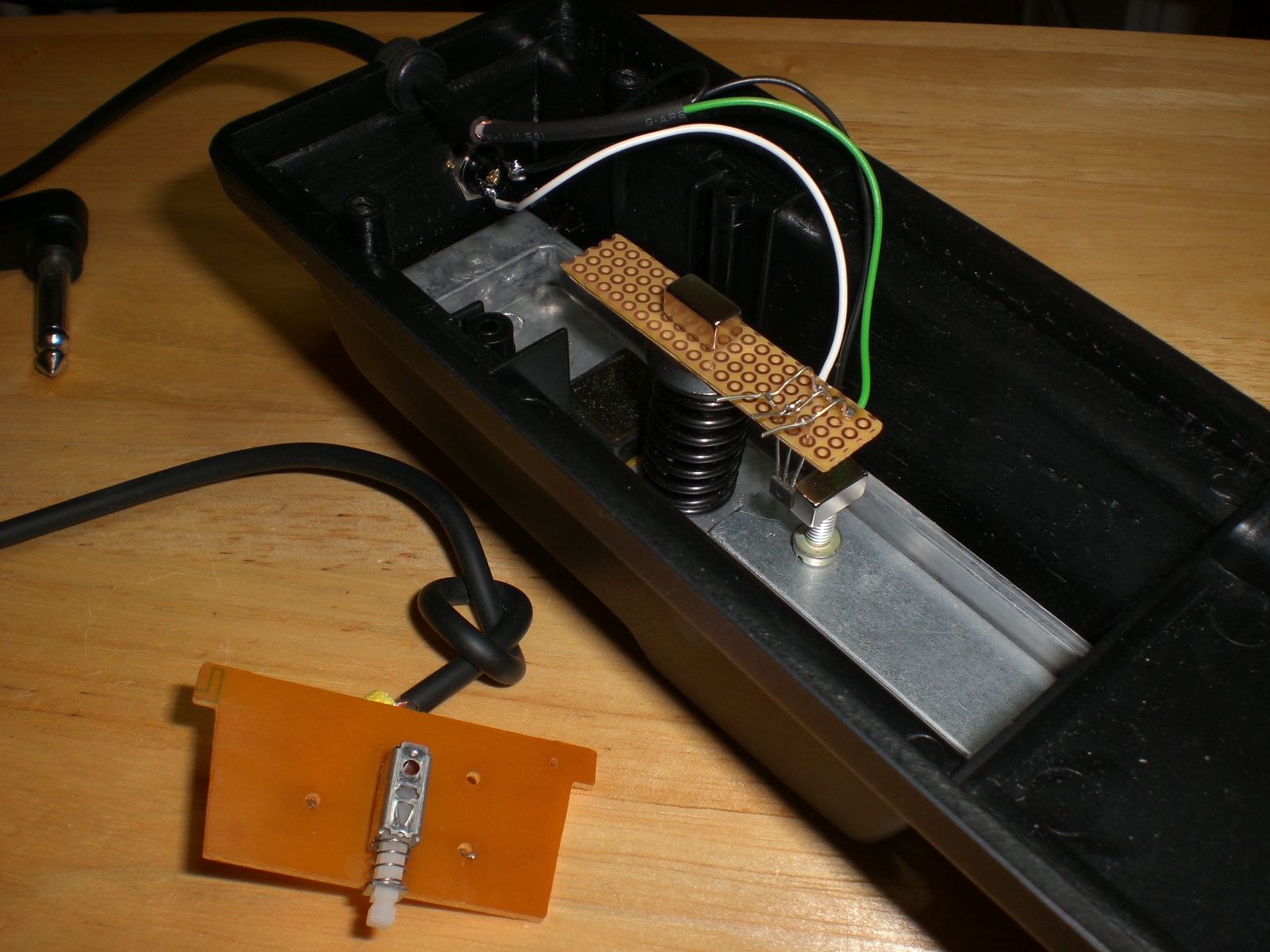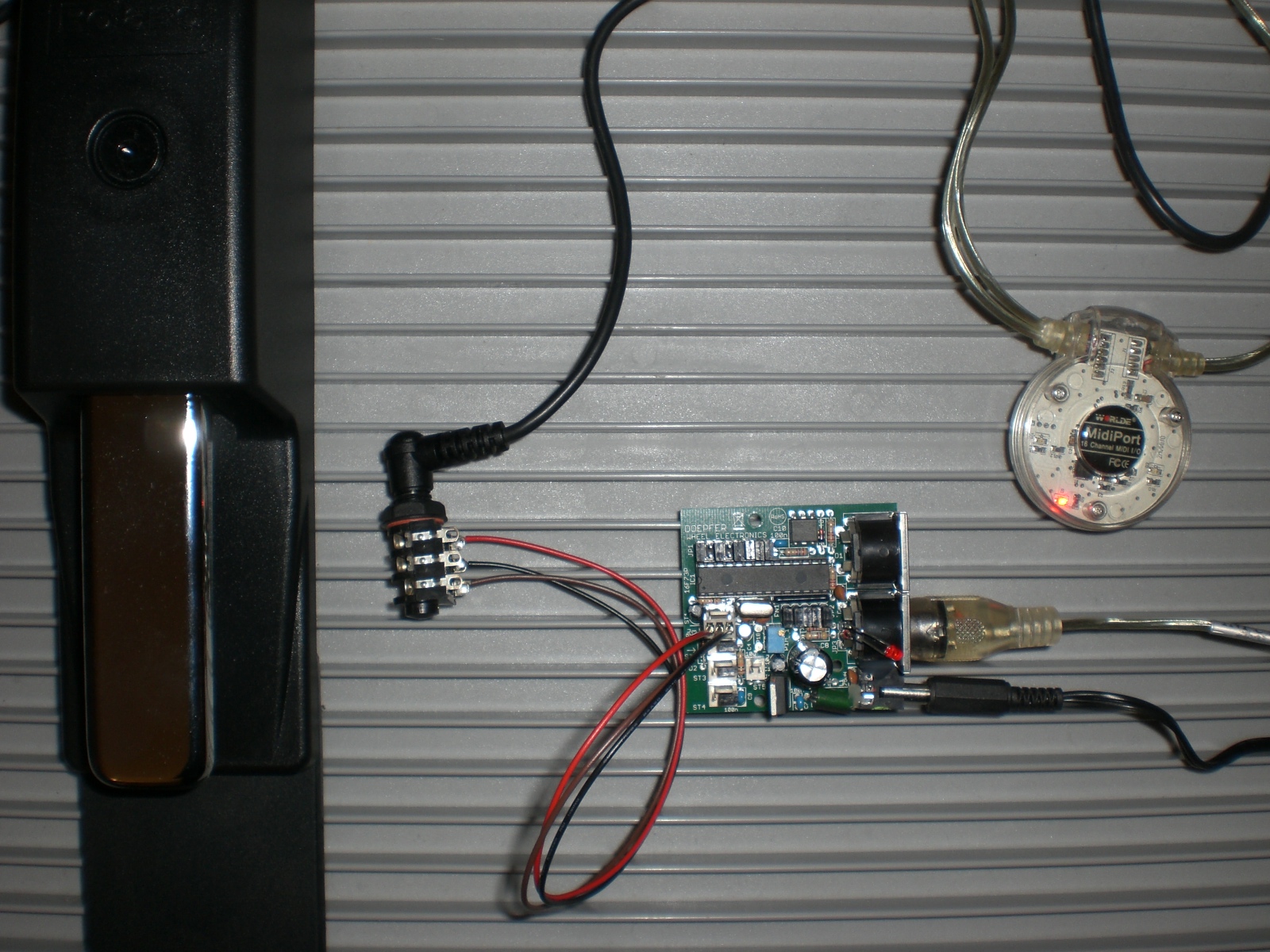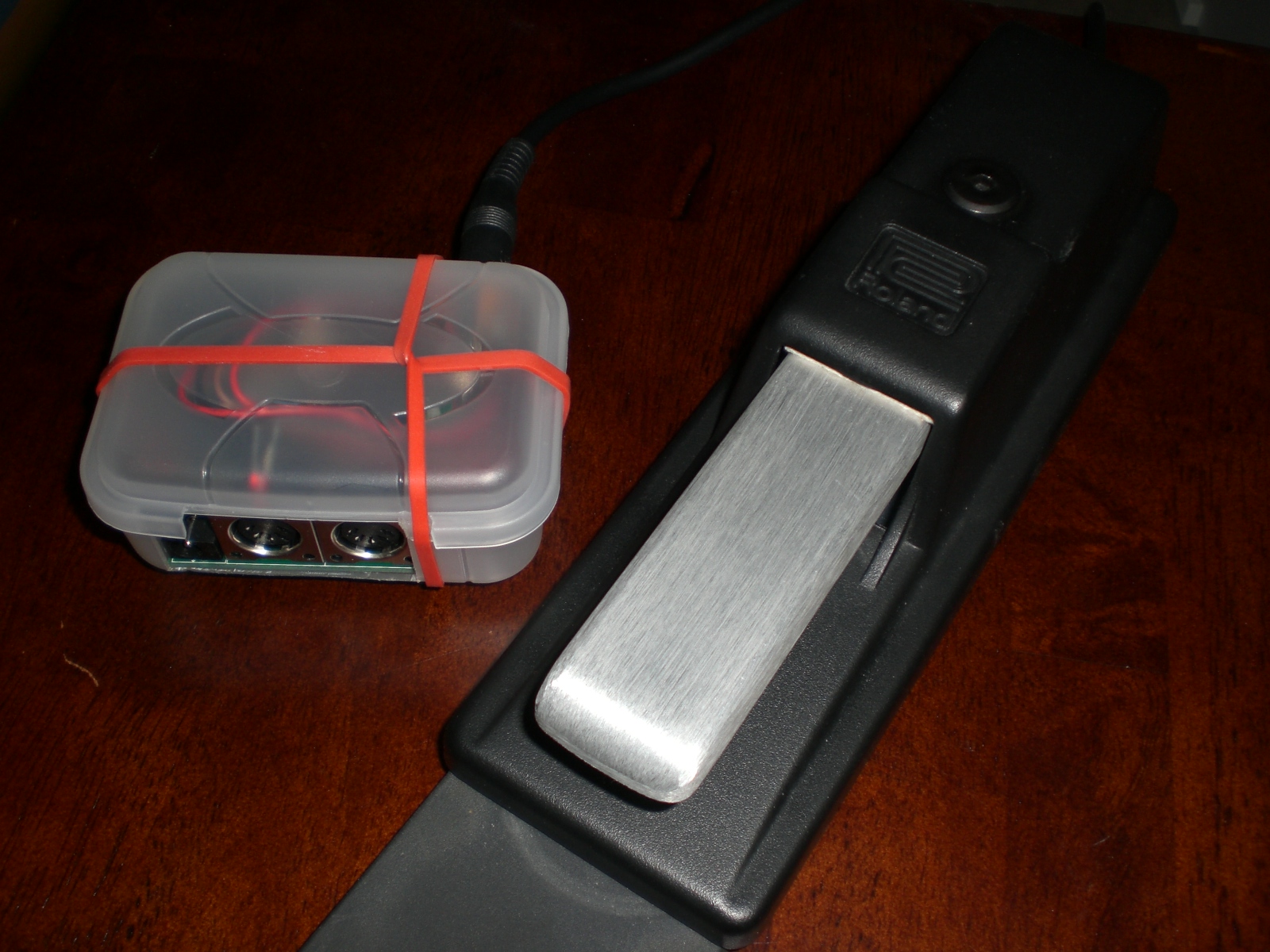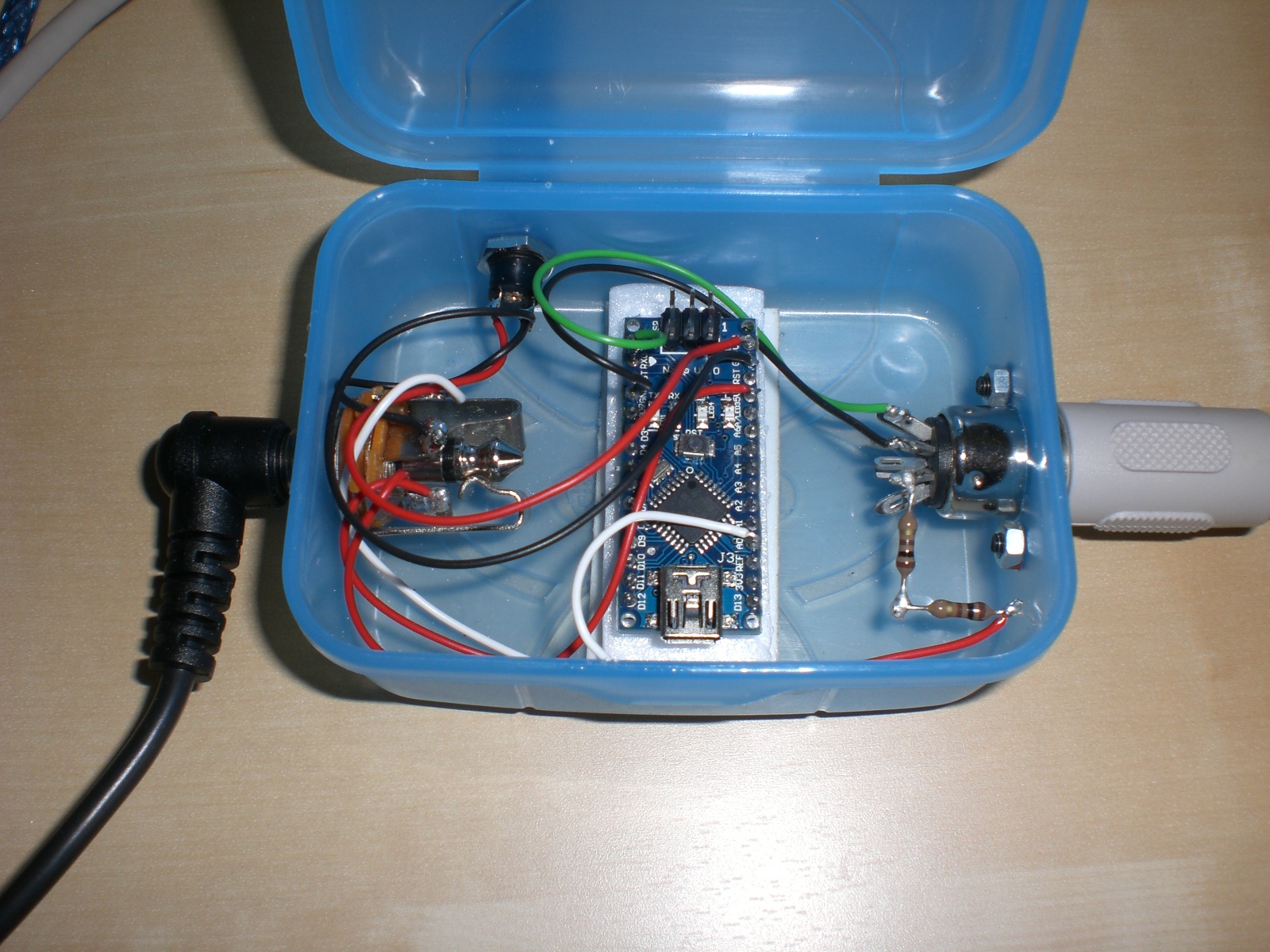Hello,
I'd like to present you my first proof-of-concept of a continuous controller based on a magnet and a hall-sensor.
I was inspired by a similar project with a Kawai VPC-1 sustain-pedal at the pianoworld forum:
http://www.pianoworld.com/forum/ubbthre...ost2395062
I'm using an old Roland DP-6 and removed its switch and the cable, so my modification is reversible:

In the middle of the foto you can see a little black part with 3 legs, this is a Honeywell hall-sensor of the linear type and for 5 V. Next to it I placed a litte neodym-magnet. Depending on the pedal movement the magnet has a different position. If everything is well adjusted, I get a continuous voltage between 0.01 V and 4.88 V (green wire) from the 5 V power-supply (white and black wire).
Because the lever of the DP-6 is made of aluminium, I put a small sheet iron on it, so the magnet and the little screw are attracted. The PCB is fixed temporarily by another magnet, so it can be positioned too. At least the 3rd-dimension is adjustable by the wires of the sensor.
Once I have found the best position, I plan to glue the components with epoxid and to solder the sensor.
To get a continuous MIDI CC 64 (sustain) from the voltage range, I used again my separate Doepfer Wheel Electronic. I just had to unplug my other (passive) potentiometer-based pedal and to connect the two output wires of my new (active) pedal with GND and the measuring input of the Doepfer WE.
When I'm finished, I'll let you know. I hope it is interesting for you, despite my very limited language, sorry :-)
cheers
Last edited by groovy (21-03-2015 22:11)






